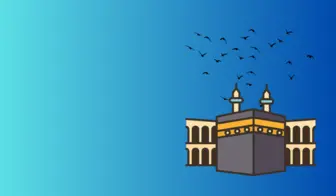Makkah 1

Mecca – 1
Mecca is a city located in the Hejaz region on the western side of the Arabian Peninsula, situated approximately 277 meters above sea level in a narrow valley surrounded by mountains. The city lies at the intersection of major caravan routes that stretch from north to south. Due to this strategic position, it held significant geopolitical importance as both a commercial hub and a religious center, being the site of the sacred Kaaba.
Although Mecca's rocky and barren terrain limited agricultural activities, its geographic disadvantages were offset by its commercial vitality and spiritual magnetism. Particularly in the trade network linking the Red Sea ports with Yemen, Syria, and Abyssinia, Mecca played a crucial role. In this sense, the city functioned as an economic gateway.
Tribalism and Social Stratification
Before the advent of prophethood, Mecca's social structure was based on a tribal system. The Quraysh, one of the most powerful tribes, held economic and political dominance in the city. The Quraysh tribe was divided into sub-clans and lineages, each with its own leader.
Lineage and noble tribal affiliation were of great importance in society. This deepened the social hierarchy: slaves, mawali (protected foreigners), women, and the poor were at the bottom, while noble Qurayshi men formed the upper class.
Meccan society was patriarchal. Male dominance was evident not only in family life but also in commerce, law, and warfare. Women held little social status; they had no inheritance rights, and in some tribes, baby girls were buried alive. This highlights how revolutionary the rights granted to women by Islam were in later periods.
Trade, Pilgrimage, and Slavery
Mecca's economic strength was based on caravan trade. Qurayshi merchants were especially active in trade expeditions between Yemen and Syria. As mentioned in the Qur’an, the “Winter and Summer journeys” (Rihla) were key elements shaping Mecca’s economic structure at the time.
Additionally, the presence of the Kaaba made Mecca a religious center. Seasonal fairs and the pilgrimage season brought large crowds to the city, which invigorated the economy. Fairs like Ukaz, Majannah, and Dhul-Majaz featured not only trade but also literary and political events. Slavery was another economic dynamic. Slaves were used in both domestic service and commercial expeditions; they were acquired through inheritance or as war captives. Wealthy Meccan families owned numerous slaves.
Cultural and Religious Life
Before prophethood, Mecca’s cultural life was shaped by oral literature, poetry, and the tradition of fairs. Arabic poetry was the most important cultural expression of the time. Poets composed verses to praise their tribes, satirize their enemies, and document social events. These poems also preserved tribal history and collective memory.
The people of Mecca had turned away from the Hanif monotheistic tradition and adopted a polytheistic (idolatrous) religion. The area around the Kaaba was filled with idols; deities such as Hubal, Lat, Manat, and Uzza were worshipped by various tribes. However, a few individuals known as Hanifs (e.g., Zayd ibn Amr), who believed in a single God (Allah), were disturbed by this religious degeneration.
Moral and Legal Structure
Moral norms in society were generally based on tribal customs and traditions. In this so-called “Age of Ignorance” (Jahiliyyah), the strong were deemed right and the weak were unprotected. Blood feuds, revenge culture, usury, prostitution, and wine drinking were widespread.
Still, some virtues—especially muruwah (manliness), loyalty, hospitality, and generosity—were held as high moral standards. These values were closely linked to tribal honor.
In conclusion, pre-prophetic Mecca was strategically important due to its location, economically powerful, yet fragmented and morally corrupted from a sociological standpoint. The city was dominated by polytheism, tribal fanaticism, and class division. Yet at the same time, it served as a mystical center around the Kaaba, a cultural hub nourished by Arabic poetry, and an economic center driven by trade and fairs.
It was precisely in this setting that Prophet Muhammad (PBUH) was born and prepared for prophethood. Over time, Mecca would become the cradle of transformation, moral awakening, and divine revelation.
Özer Akpınar
Researcher – Historian
Other Contents

